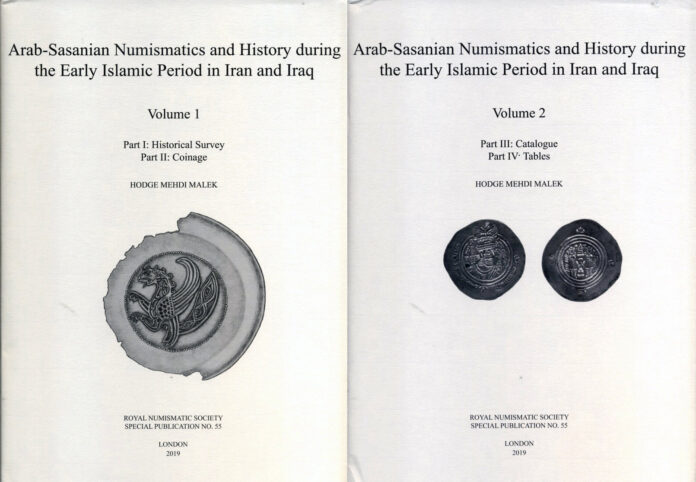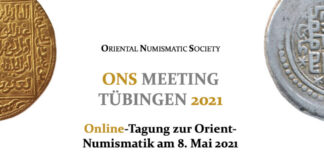
Arab-Sasanian coins are a bit tricky: only very few coin dealers are able (and, most importantly, willing) to identify them correctly and in detail. Therefore, the pieces are doomed to a rather marginalised existence. Often, they are offered in multiple lots with imprecise descriptions. In other words: collectors specialised in this field can still buy interesting and rare coins for little money.
And these pieces are very interesting. As you can tell by their name, these coins illustrate Iran’s transition from the Sasanian Empire to the Umayyad Caliphate. They document nothing less than the victory of Islam. Arab-Sasanian coins are physical evidence proving with the dates and mints indicated on them that the expansion of the Arab tribes following the Hegira was not as smooth as later sources want us to believe. If you examine the coins carefully, you can reconstruct a story that is too interesting not to be told.
The Author, Hodge Mehdi Malek
The author, Hodge Mehdi Malek, is known in the numismatic world for his many publications on Arab-Sasanian coins and the associated Sasanian series. The collector and numismatist is regarded today as the leading expert in the field, especially because he is not only a connoisseur of numismatics but also speaks the language and has visited most of the places where these coins were struck. The basis of his study is a comprehensive collection of Arab-Sasanian coins, the Johnson Collection with more than 1,600 silver and copper coins, whose catalogue is at the heart of this fundamental work.
What Are Arab-Sasanian Coins?
But what are Arab-Sasanian coins? This category is often used to lump together certain things that shouldn’t be combined in that way. Non-experts use it to describe everything that was minted after the fall of the Sasanian Empire and still looks like a Sasanian coin. That’s why Hodge Mehdi Malek specifies right away in his introduction that his work deals exclusively with coins issued under Muslim authority after the conquest of Iran and Iraq, namely until the 80s of the Hegira and therefore until AD 700. That includes early coins of the Umayyads and of their opponents, i.e. the Zubayrids and the Khawarij. Those who are already confused because they’ve never heard of these names before will be glad to know that the first part of the book describes the historic events that constitute the background of Arab-Sasanian coinage. That section contains some names that we know rather from the news than from history books, for example Ali ibn Abi Talib, who is regarded by Shia Muslims and Alevis as the first Imam.
What Is Written on the Coins?
When it comes to these coins, one of the biggest obstacles for western collectors is the foreign script. Of course, the new catalogue won’t be able to change that. However, it is a great help when it comes to identifying these pieces. For this purpose, an example is used to demonstrate where which indications are to be found. A good tip: in many cases, the quickest way to do this is by examining the reverse at the right of the right guard next to the fire altar. There you find the mint mark, and the second volume (starting on page 706) contains a detailed table listing all mints including the exact legend. And if you’re lucky enough to find the date at the left of the left guard next to the fire altar with the help of table 7 – which does not only list all dates of the catalogue but also indicates the numbers of the coins featuring that date – you have a good chance of identifying the coin. Well, at least as long the coin was well struck and the part with the important information is in good condition.
History, Catalogue and Commentary
Well, what else can be found in this reference work? Part I focusing on history is followed by part II, which is dedicated to all details of the coins. Whether it be the image, the legend, the mint, the date, or the persons – every single detail is examined from all possible perspectives. Here is just one example: the chapter dealing one by one with all of the ten better known and the numerous less well known, and in some cases unidentified, mints comprises more than 160 pages!
I will give you an overview of the remaining chapters by means of their titles: Post-reform Islamic coins / Copper Arab-Sasanian Coinage / Countermarks / Metrology / Hephtalite and issues with Bactrian legends / Late Sistan issues / Collections, coin finds and forgeries.
And that’s only the first volume, let’s have a look at the second one, the catalogue. Some of the photos seem to be quite dark and every user will be glad about the fact that he does not have to identify the pieces by means of plates – as it is often the case regarding die studies of Greek coins – but can use tables instead.
In other words: Hodge Mehdi Malek expects his readers to be willing to study the matter at hand and to learn to read the legends. That did not change because of the new book. Even though it makes identifying coins much easier, it is still something that you have to work for. Conversely, that also means that Arab-Sasanian coins will continue to be sold at prices that do not match their degree of rarity. And we do not begrudge anyone who specialised in this field and benefits form that.
The book is distributed through Spink.




